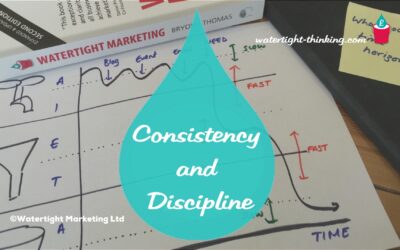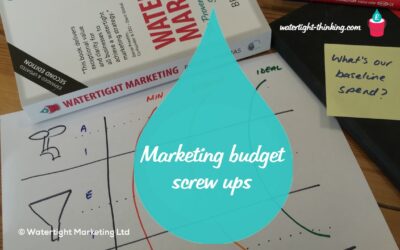Posts on the Flow Foundations
Fancy a regular dose of marketing clarity by email?
First Flow Foundation – The Right Work
Why having a clear proposition isn’t enough
When we published our research paper last autumn, one of the key takeouts was that having a clear proposition wasn’t enough. Even when the leadership team and senior marketer are clear on what you’re selling and to whom, this doesn’t guarantee an effective marketing plan.
Marketing’s role in employer marketing
How do you ensure you recruit the right candidates for your business, make your company attractive to work in and encourage people to stay? In our December roundtable we talked about three key bits of thinking to take into consideration and then discussed what makes for good (and bad) employer marketing and the role marketing can play to support the HR team.
What skills does a marketing director need?
Getting the backing of your board for the marketing budget you need to do a good job is a key skill of a client-side marketer. If you’re getting push back on your budget requests, here are three key ways to get better buy-in by distinguishing the three marketing budgets, index-linking your requests, and using Visual Budgeting to express your rationale.
What makes marketing work?
What most people see of marketing is what goes out into the world. By definition, the visible marketing is what businesses are putting out the get noticed and get people interested. This is Taps in the Watertight Marketing core metaphor (See Chapter 2 & 8). The thing is, if you’re not a marketer, it can be easy to assume that what you see is all there is. If you only actually do the stuff that’s visible, it won’t work! There are underpinning foundation activities under the radar that are essential to seeing a return.
Growth: Do you want lifetime value, margin or volume?
So, you want marketing to grow your business? The first think we’d need to do is work out what kind of growth you want. Do you want to increase customer lifetime value, margin, or the volume of customers. Different marketing will achieve different types of growth, and there’s a specific sequence that can compound the benefit.
Why your direct competitors are often the least important
If I say ‘competitors’ to you, I’m willing to bet that you think of people that offer similar things to you. So, Burger King would be a competitor to McDonalds, and Pepsi a competitor to Coke… right? Absolutely, these are direct competitors. If you want a take away burger, these will come to mind. But, what if you just want a take away, there are many more competitors there. And, what about cooking yourself? Or skipping dinner altogether?
Second Flow Foundation – Balanced Routine
There’s a hole in your marketing plan
When we were delving into the data behind our research paper (published last autumn), one of the most surprising results was this: having a marketing plan that supports the sales process is the lowest scoring area in all business sizes and all roles. Even marketers themselves rated it poorly. This blog explores why and what you can do about it.
What skills does a marketing director need?
Getting the backing of your board for the marketing budget you need to do a good job is a key skill of a client-side marketer. If you’re getting push back on your budget requests, here are three key ways to get better buy-in by distinguishing the three marketing budgets, index-linking your requests, and using Visual Budgeting to express your rationale.
The questions to ask when interviewing a Marketing Manager
You can use the Watertight Marketing book to plan your activity, and decide on the tweaky ou need to your marketing leaks – but who will you get to do the work? We regularly support in recruiting marketers into their teams. In this post, Cheryl Crichton picks out here two favourite interview questions from amongst a handy list of things you could ask.
What makes marketing work?
What most people see of marketing is what goes out into the world. By definition, the visible marketing is what businesses are putting out the get noticed and get people interested. This is Taps in the Watertight Marketing core metaphor (See Chapter 2 & 8). The thing is, if you’re not a marketer, it can be easy to assume that what you see is all there is. If you only actually do the stuff that’s visible, it won’t work! There are underpinning foundation activities under the radar that are essential to seeing a return.
Do you have the tools to match your skills?
You can grow a business on sales skills alone, but why would you make your life harder than it needs to be. Investing in tools to match your skills will get you further faster. In this post, Bryony looks at the difference between tools and skills and why a scaling business needs both.
Is it time to Validate Concerns rather than Overcome Objections?
If we take the perspective that 1) Most third parties who have an opinion about a purchase decision at this stage in the process have the best interests of the buyer in mind; 2)Their opinion makes complete sense from their perspective; and that, 3)Nobody likes being told that they’re wrong… then looking again at the wisdom of Objection Handling can turn your thinking inside out.
Third Flow Foundation – Baseline Rhythm
How to deliver consistent marketing
When we were delving into the data behind our research paper (published last autumn), one of the most surprising results was this: having a marketing plan that supports the sales process is the lowest scoring area in all business sizes and all roles. Even marketers themselves rated it poorly. This blog explores why and what you can do about it.
What makes for a good marketing leader
For those stepping into to a leadership position, what skills and knowledge do you need? What does good look like and what does the business you’re in expect of you? In this month’s roundtable we talked about what qualities you need, what the role entails and how to make sure you’re both successful and motivated
How to show impact: quick wins and long-term success
One thing is certain in a marketing role. You’ll want to show the impact marketing has – to the leadership team, board, stakeholders or the wider business. At this month’s roundtable we chatted about what quick wins you can show, what successes are longer term and what milestones you can put in place that will show progress.
10 Ways to Screw Up Your Marketing Budget
Setting and getting buy in for your marketing budget can be challenging. It’s not uncommon to find MDs and FDs scratching their heads about what’s planned, or what was spent on, marketing. We also see vying for budget amongst sales teams, account managers and marketers – with each claiming they can put it to best use.
How close are you to your FD?
How close are you with your FD? Having a good relationship with finance is important. Getting them on-board and enthusiastically supporting your strategy and plan is often a key piece to get right. But all too often, finance think that marketing is solely there to spend money and view sales more warmly because they can see direct income from the fruit of their endeavours
What skills does a marketing director need?
Getting the backing of your board for the marketing budget you need to do a good job is a key skill of a client-side marketer. If you’re getting push back on your budget requests, here are three key ways to get better buy-in by distinguishing the three marketing budgets, index-linking your requests, and using Visual Budgeting to express your rationale.
Fourth Flow Foundation – Maintain Momentum
Maintaining momentum in your marketing efforts
Maintaining momentum is achieved by creating a vision, being clear about your values and putting in place milestones – and then communicating that to your people so they feel part of the plan. It also involves consistent effort over time, which is where it often falters.
Effectively managing change
Marketing leaders are often brought in to be a ‘change agent’. Whether you’re involved in larger strategic projects or small changes within the marketing team, change is often a challenge. In this roundtable we chatted about why change is needed, how it might falter and what makes for success.
Marketing’s role in employer marketing
How do you ensure you recruit the right candidates for your business, make your company attractive to work in and encourage people to stay? In our December roundtable we talked about three key bits of thinking to take into consideration and then discussed what makes for good (and bad) employer marketing and the role marketing can play to support the HR team.
Shining a light on your vision, values and milestones
Agreeing vision, values, goals and milestones is a shared responsibility across the leadership team. Marketing’s role is to turn these into something that engages and inspires employees, suppliers, clients and prospects alike. To do that, you use both numbers and narrative. Each has an important part in motivating your audience.
Do you have a compelling narrative for your numbers?
When I ask the leadership team of a growing business about their vision for the next 3-5 years, I will almost always be given a revenue number they want to reach. For me, this is like talking to people about a road trip by junction number. It’s practical, but not compelling. In this post, we explore how a marketer can narrative to really bring things to life.
What skills does a marketing director need?
Getting the backing of your board for the marketing budget you need to do a good job is a key skill of a client-side marketer. If you’re getting push back on your budget requests, here are three key ways to get better buy-in by distinguishing the three marketing budgets, index-linking your requests, and using Visual Budgeting to express your rationale.



















